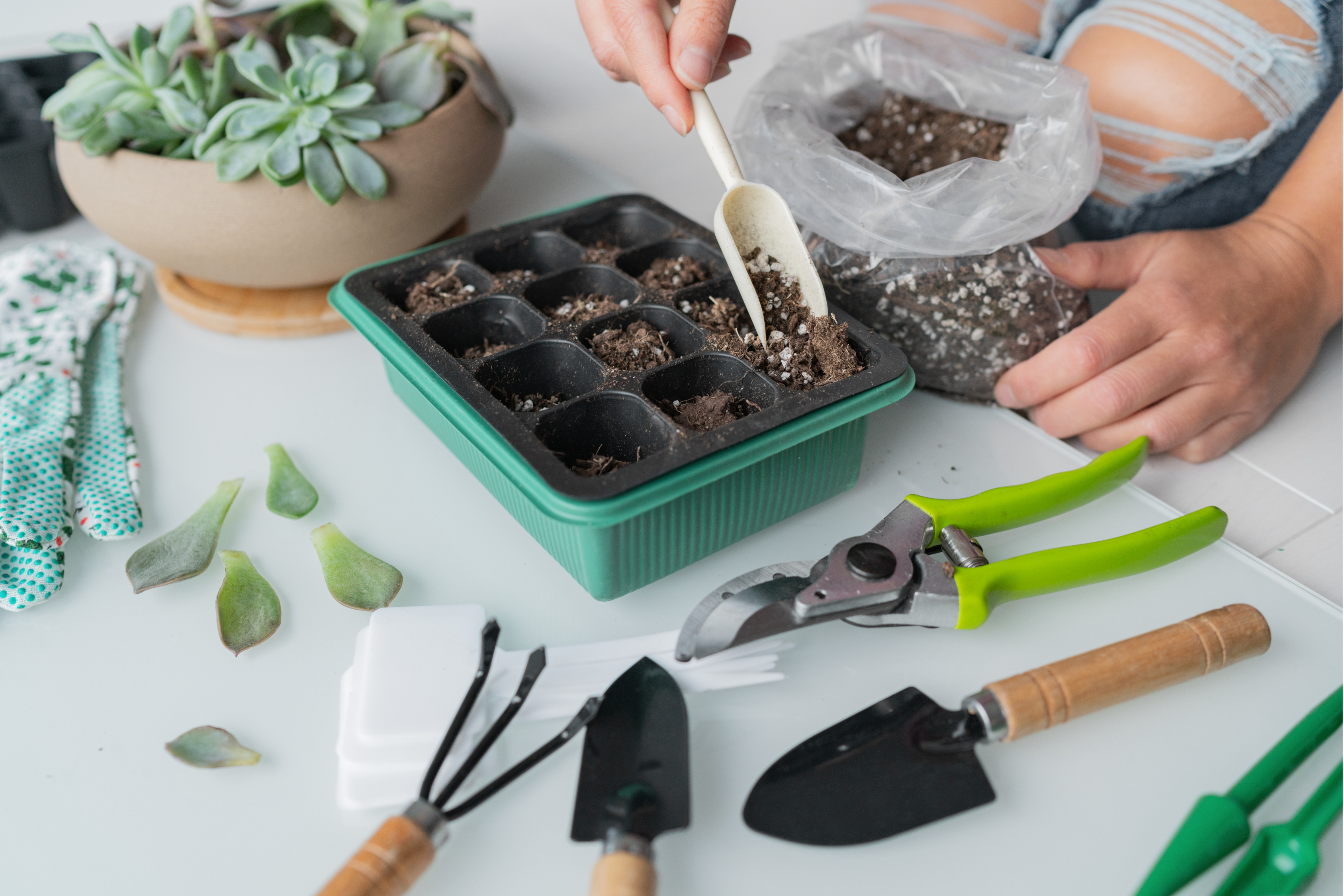Introduction:
Plant propagation is the art and science of multiplying plants, allowing gardeners to expand their collections, share favorite varieties with friends, and create new plants from existing ones. While the idea of propagating plants may seem daunting to some, it's actually quite accessible and rewarding with the right knowledge and techniques. In this guide, we'll demystify plant propagation by exploring easy and effective methods for multiplying plants, from basic techniques like division and stem cuttings to more advanced methods such as air layering and seed sowing.
The Magic of Plant Propagation:
Plant propagation offers numerous benefits and rewards for gardeners:
-
Cost Savings: Propagating plants from cuttings, divisions, or seeds can save money compared to purchasing established plants from nurseries or garden centers.
-
Preservation of Favorites: Propagation allows you to preserve and perpetuate favorite plants, heirloom varieties, or rare cultivars that may be difficult to find commercially.
-
Creative Expression: Propagation provides an opportunity for creative expression, allowing you to experiment with different techniques, combinations, and variations to create unique and personalized plant collections.
-
Educational Experience: Propagation is a hands-on learning experience that teaches valuable skills in plant biology, horticulture, and gardening, fostering a deeper understanding and appreciation of plants and their life cycles.
Easy Methods for Plant Propagation:
-
Stem Cuttings:
-
Select healthy, non-flowering stems from the parent plant, making clean cuts just below a leaf node.
-
Remove lower leaves to expose nodes, dip the cut end in rooting hormone (optional), and plant the cutting in a well-draining potting mix.
-
Keep the soil consistently moist and provide bright, indirect light until roots develop, usually within a few weeks to months.
-
Division:
-
Divide clumping perennials or root-bound plants into smaller sections using a sharp knife or garden spade.
-
Ensure each division has healthy roots and shoots, replanting them in suitable soil and containers or directly in the garden.
-
Water well and keep the soil evenly moist until new growth appears, providing appropriate care based on the plant's needs.
-
Layering:
-
Choose a flexible stem on the parent plant and make a small incision or wound on the underside.
-
Secure the wounded portion to the soil with a U-shaped pin or twist tie, covering it with soil or mulch to encourage rooting.
-
Once roots have formed, detach the new plant from the parent and transplant it to its desired location.
-
Leaf Cuttings:
-
Select healthy, mature leaves from the parent plant, ensuring they are free from damage or disease.
-
Place the leaves on a well-draining potting mix or perlite, burying the base of the leaf slightly in the soil.
-
Keep the soil lightly moist and provide bright, indirect light, watching for new plantlets or roots to develop from the leaf base.
-
Seed Propagation:
-
Collect ripe seeds from the parent plant and sow them in trays, pots, or directly in the garden soil, following specific instructions for each plant species.
-
Keep the soil consistently moist and provide adequate light and warmth for germination, thinning seedlings as needed to prevent overcrowding.
Tips for Successful Plant Propagation:
-
Use Healthy Plant Material: Start with healthy, disease-free plant material for propagation to ensure the best chances of success.
-
Provide Optimal Conditions: Pay attention to factors such as light, temperature, humidity, and soil moisture to create favorable conditions for rooting and growth.
-
Be Patient: Plant propagation takes time, so be patient and don't expect immediate results. Some methods may require weeks or even months for roots or new growth to develop.
-
Experiment and Learn: Don't be afraid to experiment with different propagation methods and techniques to see what works best for your plants and growing environment.
Conclusion:
Plant propagation is a rewarding and accessible practice that allows gardeners to multiply plants and expand their horticultural horizons. By mastering simple techniques like stem cuttings, division, and layering, you can unlock a world of possibilities for creating new plants and enhancing your garden with an ever-growing array of greenery and beauty.
So, roll up your sleeves, gather your tools and materials, and dive into the fascinating world of plant propagation. With a little knowledge, patience, and experimentation, you'll soon be propagating plants like a pro and enjoying the satisfaction of watching new growth emerge from your efforts.
Happy propagating!

